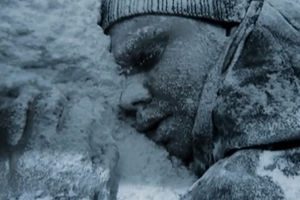hypothermia
 Sometimes, there are events in history that end up tied to other events in history, in one way or another. On this day, December 9, 2003, Tehran, Iran was hit by unseasonably cold temperature, that led to the deaths of 40 people from hypothermia. It is very rare to see such large groups of people die in this way at the same time, but it does happen, as seen in Tehran. Their deaths occurred when their core body temperature fell to 77 degrees Fahrenheit. So, how does this have anything to do with history beyond 2003? Well, it actually does, and not in a good way.
Sometimes, there are events in history that end up tied to other events in history, in one way or another. On this day, December 9, 2003, Tehran, Iran was hit by unseasonably cold temperature, that led to the deaths of 40 people from hypothermia. It is very rare to see such large groups of people die in this way at the same time, but it does happen, as seen in Tehran. Their deaths occurred when their core body temperature fell to 77 degrees Fahrenheit. So, how does this have anything to do with history beyond 2003? Well, it actually does, and not in a good way.
Most of us, these days, know about hypothermia. In fact, the causes and the fixes are pretty well known, but what I didn’t know before, although maybe I should have, is that the information we have on hypothermia came from the horrible experiments that the Nazis performed on the prisoners at the Dachau concentration camp during World War II. These unethical medical experiments that were carried out during the Third Reich fell into three categories. The first category consists of experiments aimed at facilitating the survival of Axis military personnel. In Dachau, physicians from the German air force and from the German Experimental Institution for Aviation conducted high-altitude experiments, using a low-pressure chamber, to determine the maximum altitude from which crews of damaged aircraft could parachute to safety. Scientists there carried out so-called freezing experiments using prisoners to find an effective treatment for hypothermia. While the findings might have been a good thing, the way the experiments were carried out was horrendous. After these experiments, most people knew that if they were  outside in frigid temperatures, they could die of hypothermia. Nevertheless, there were a few miracle situations, such as the two year old girl in Canada in 1994, who survived after her core body temperature dropped to 57 degrees Fahrenheit when she wandered away from her home in Saskatchewan.
outside in frigid temperatures, they could die of hypothermia. Nevertheless, there were a few miracle situations, such as the two year old girl in Canada in 1994, who survived after her core body temperature dropped to 57 degrees Fahrenheit when she wandered away from her home in Saskatchewan.
The second category of experimentation involved developing and testing pharmaceuticals and treatment methods for injuries and illnesses which German military and occupation personnel encountered in the field. Apparently the Nazis felt free to find ways to save their soldiers lives, at the expense of their prisoners. At the German concentration camps of Sachsenhausen, Dachau, Natzweiler, Buchenwald, and Neuengamme, prisoners were subjected to immunization compounds for the prevention and treatment of contagious diseases, including malaria, typhus, tuberculosis, typhoid fever, yellow fever, and infectious hepatitis. The Ravensbrueck camp was the site of bone-grafting experiments and experiments to test the efficacy of newly developed sulfanilamide drugs. At Natzweiler and Sachsenhausen, scientists tested prisoners with phosgene and mustard gas in order to find possible antidotes. Their lives simply didn’t matter when it came to the experimentation.
The third category of medical experimentation sought to advance the racial and ideological principles of the Nazi worldview. The most infamous were the experiments of Josef Mengele at Auschwitz. Mengele conducted medical experiments on twins. He also directed serological experiments on Roma Gypsies, as did Werner  Fischer at Sachsenhausen, in order to determine how different “races” withstood various contagious diseases. The research of August Hirt at Strasbourg University also intended to establish “Jewish racial inferiority.” Other gruesome experiments meant to further Nazi racial goals were a series of sterilization experiments, undertaken primarily at Auschwitz and Ravensbrueck. There, scientists tested a number of methods in their effort to develop an efficient and inexpensive procedure for the mass sterilization of Jews, Roma Gypsies, and other groups that the Nazi leaders considered to be racially or genetically undesirable. It is difficult for me to even think about the cruelty that the Nazis inflicted on the Jews and Gypsies during those horrible years.
Fischer at Sachsenhausen, in order to determine how different “races” withstood various contagious diseases. The research of August Hirt at Strasbourg University also intended to establish “Jewish racial inferiority.” Other gruesome experiments meant to further Nazi racial goals were a series of sterilization experiments, undertaken primarily at Auschwitz and Ravensbrueck. There, scientists tested a number of methods in their effort to develop an efficient and inexpensive procedure for the mass sterilization of Jews, Roma Gypsies, and other groups that the Nazi leaders considered to be racially or genetically undesirable. It is difficult for me to even think about the cruelty that the Nazis inflicted on the Jews and Gypsies during those horrible years.

